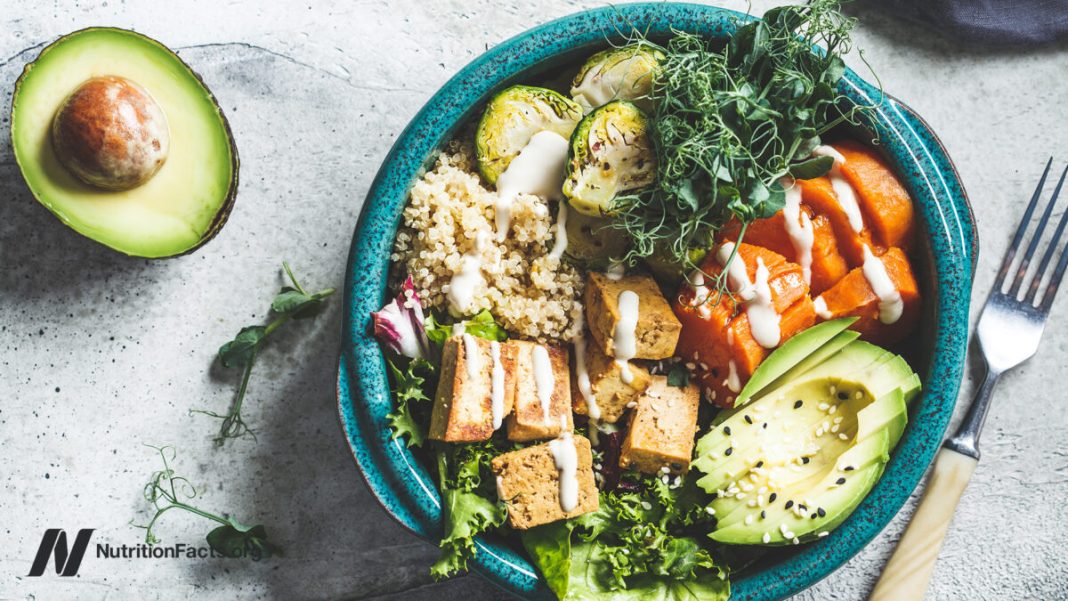The power of the “eat more” food environment can overcome our conscious controls.
Food and beverage companies frame body weight as “a matter of personal choice.” Even when we aren’t distracted, the power of the “eat more” food environment may sometimes overcome our conscious controls of overeating. One look around the room at a dietician convention can tell you that even nutrition professionals are vulnerable to the aggressively marketed ubiquity of tasty, cheap, convenient calories. This suggests there are aspects of our eating behaviors “that defy personal insight or are below individual awareness,” flying below the radar of conscious awareness. Appetite physiologists call the result of these subconscious actions “passive overconsumption.”
Remember that brain scan study where the thought of a milkshake lit up the same reward pathways in the brain as substance abuse? That was triggered just by a picture of a milkshake. Dopamine gets released, cravings get activated, and we’re motivated to eat. Intellectually, we know it’s just an image, but our lizard brain sees survival. It’s just a reflexive response over which we have little control, which is why marketers ensure there are pictures of milkshakes and their equivalents everywhere.
As I discuss in my video The Role of Personal Responsibility in the Obesity Epidemic, maintaining a balance between calories in and calories out feels like a series of voluntary acts under conscious control, but it may be more akin to bodily functions, such as blinking, breathing, coughing, swallowing, or sleeping. You can try to will yourself power over any of these, but by and large, they just happen automatically, driven by ancient scripts.
Not only are food ads ubiquitous, but so is the food. The types of establishments selling food products expanded dramatically in the 1970s and 1980s. Now, you can find candy and snacks at the checkout counters of “gasoline stations, building material outlets, auto parts stores, drug stores, and home furnishing stores” and more. The largest food retailer in the United States is Wal-Mart. You can get that jolt of “dopamine and the associated artificially induced feelings of hunger in modern society” around every turn. Every day, we run the gauntlet.
It’s also become “socially acceptable to eat food at any time of day and anywhere—in cars, in your hand, on the street—places where eating had never been acceptable.” We’ve become a snacking society. Vending machines are everywhere. Daily eating episodes seem to have gone up by about a quarter since the late 1970s, increasing from about four to five occasions a day, potentially accounting for twice the calorie increase attributed to increasing portion sizes. Snacks and beverages alone could account for the bulk of the calorie surplus implicated in the obesity epidemic.
And think of the children. Here we are trying to do the best for our kids, role-modeling healthy habits and feeding them healthy foods, but then they venture out into a veritable tornado of junky food and manipulative messages. A commentary in The New England Journal of Medicine asked: “But why should Mr. and Ms. G.’s efforts to protect their children from life-threatening illness be undermined by massive marketing campaigns from the manufacturers of junk food?” Pediatricians are now encouraged to have the “French Fry Discussion” with parents at the 12-month well-child visit instead of waiting until their kids are two—though even that may be too late. As you can see below and at 3:35 in my video, two-thirds of infants are being fed junk food by their first birthday.
Dr. David Katz may have said it best in the Harvard Health Policy Review: “Those who contend that parental or personal responsibility should carry the day despite these environmental temptations might consider the implications of generalizing the principle. Perhaps children should be encouraged, but not required, to attend school and tempted each morning by alternatives, such as buses to the circus, zoo, or beach.”
It may be helpful to take a step back and think of what’s at stake here. We aren’t just talking about being manipulated into buying a different brand of toothpaste. The obesity pandemic has resulted in millions of deaths and untold suffering. If you aren’t mad yet, brace yourself for my next video: The Role of Corporate Influence in the Obesity Epidemic.
This is the ninth video in my 11-part series. If you missed any of the previous ones, see the related posts below.







